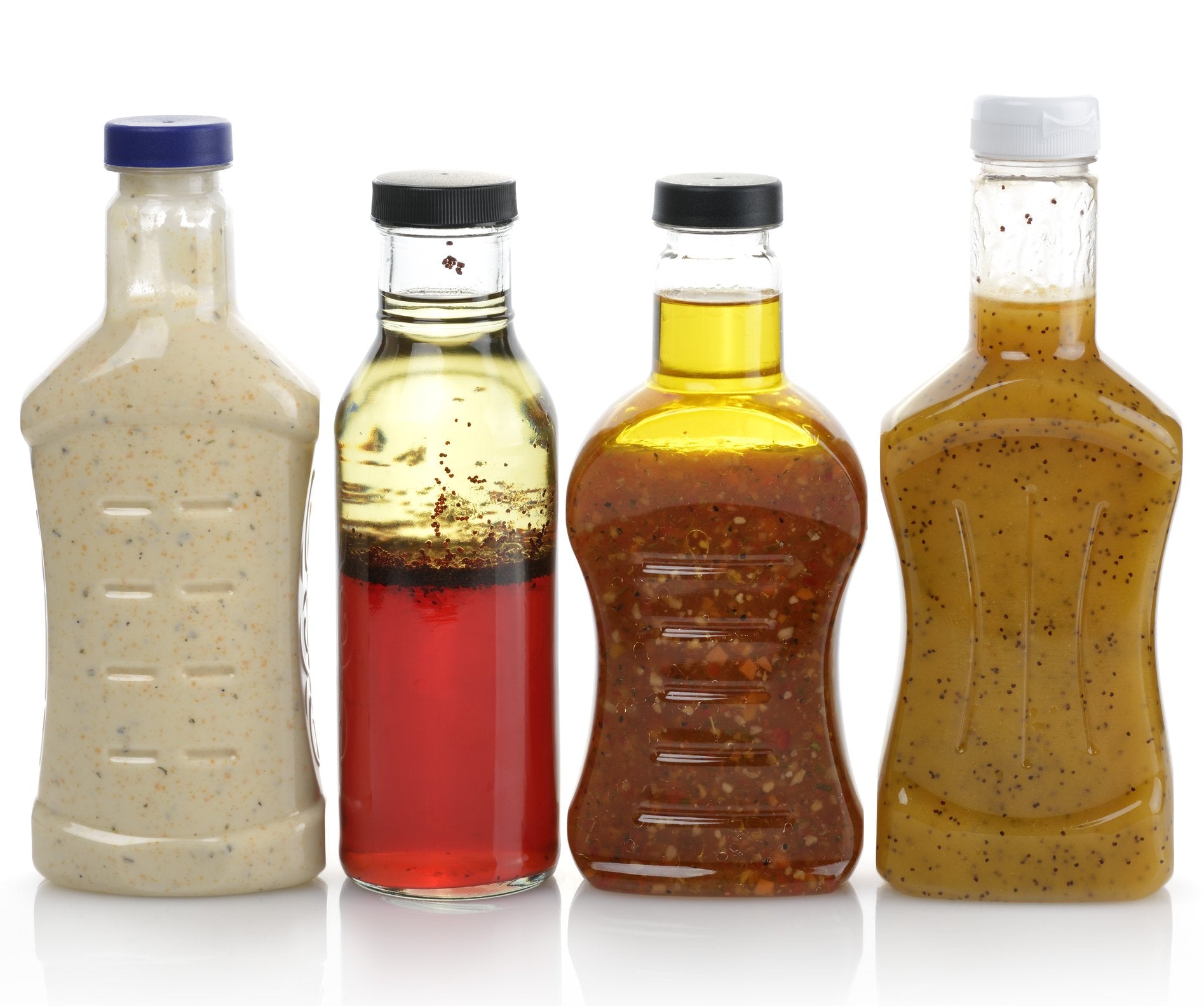Choosing the Right Emulsifier In Food for Your Recipes
Why It Is Needed to Integrate an Emulsifier in Food for Ideal Preference and Top Quality
Emulsifiers play a critical role in food manufacturing by making sure the steady mixing of immiscible fluids, such as oil and water. They minimize interfacial tension, which prevents the splitting up of components and adds to an uniform texture. This not only boosts mouthfeel however additionally influences flavor perception. Comprehending the need of emulsifiers discloses deeper insights right into their feature and relevance in culinary applications. What effects does this have for food advancement and customer preferences?
Comprehending Emulsifiers: The Fundamentals
Emulsifiers play a crucial function in food science, functioning as representatives that facilitate the blending of 2 immiscible fluids, such as oil and water. These substances possess both hydrophilic (water-attracting) and hydrophobic (water-repelling) residential properties, which enable them to maintain emulsions. Usual emulsifiers consist of lecithin, found in egg yolks and soybeans, and mono- and diglycerides, originated from fats.
The Scientific research Behind Emulsification
When two immiscible liquids are integrated, the procedure of emulsification becomes essential for accomplishing a secure mixture. Emulsification involves dispersing one liquid within another, usually oil in water or vice versa. This process happens with mechanical anxiety, which breaks the larger beads right into smaller sized ones, thereby increasing the surface area. Nonetheless, without the existence of emulsifiers, these droplets would certainly coalesce, resulting in splitting up.
Emulsifiers are molecules with hydrophilic (water-attracting) and hydrophobic (water-repelling) residential or commercial properties. Their distinct structure enables them to decrease the interfacial stress in between the two immiscible fluids, stabilizing the solution. This stablizing prevents separation and improves the harmony of texture and flavor. The interactions at the molecular level are essential for keeping the stability of the emulsion, making certain that food items preserve their wanted uniformity and preference. Recognizing this scientific research is considerable for food scientists and producers in developing high-grade food.
Sorts Of Emulsifiers Utilized in Food
The types of emulsifiers used in food can be generally categorized into artificial and natural ranges. Common food emulsifiers, such as lecithin and mono- and diglycerides, play a crucial role in improving food stability and appearance. Understanding these distinctions is essential for valuing just how emulsifiers contribute to the total high quality of food items.
Natural vs. Artificial Emulsifiers
While both artificial and all-natural emulsifiers serve the necessary role of stabilizing blends in food items, their origins and characteristics vary significantly. Natural emulsifiers, stemmed from plant or pet resources, include lecithin, casein, and specific periodontals. They are commonly perceived as much healthier choices, attracting customers seeking clean-label items. In contrast, synthetic emulsifiers, such as mono- and diglycerides, are chemically crafted and may supply boosted stability and functionality in a broader variety of applications. These synthetic choices can be much more economical and supply constant high quality. Nonetheless, they might evoke suspicion amongst health-conscious customers. Eventually, the choice in between synthetic and all-natural emulsifiers depends upon the desired high qualities of the food item, consisting of texture, flavor, and shelf-life stability.
Usual Food Emulsifiers
Emulsifiers play an important function in the food sector, ensuring the security and structure of various items. Usual food emulsifiers include lecithin, mono- and diglycerides, and polysorbates. Emulsifier In Food. Lecithin, originated from sources like soybeans and egg yolks, is widely used in baked products and chocolates. Mono- and diglycerides, frequently obtained from vegetable oils, boost the creaminess of margarine and ice lotion. Polysorbates, artificial emulsifiers, are regularly found in salad dressings and sauces, promoting a smooth uniformity. Other emulsifiers such as xanthan gum tissue and guar gum tissue, both all-natural thickeners, additionally add to the wanted texture in various food. Each emulsifier type offers details functions, adding to the general quality and charm of food things

Role in Food Stability
Food security is considerably influenced by the sorts of emulsifiers utilized, which aid stop the separation of active ingredients in various formulations. Emulsifiers such as lecithin, mono- and diglycerides, and polysorbates play vital roles in preserving the harmony of products like dressings, sauces, and ice lotions. Lecithin, stemmed from soy or egg yolk, is particularly effective due to its natural properties, while mono- and diglycerides improve texture and service life. Polysorbates, on the other hand, boost the security of oil-in-water solutions, making them perfect for baked products. The choice of emulsifier depends on the certain food application and wanted qualities, guaranteeing that items continue to be steady, attractive, and of excellent quality throughout their intended service life.
Exactly How Emulsifiers Improve Texture and Mouthfeel
Enhancing the sensory experience of food, emulsifiers play an essential role in boosting texture and mouthfeel. These compounds assist in the consistent circulation of active ingredients, enabling a smoother and creamier uniformity in products such as dressings, sauces, and gelato. By stabilizing mixtures of oil Find Out More and water, emulsifiers stop splitting up, leading to a cohesive texture that improves the general consuming experience.
Additionally, emulsifiers can customize the thickness of foodstuff, adding to a desirable thickness or creaminess. This modification of structure can influence how food really feels in the mouth, influencing fulfillment and enjoyment. In addition, by developing a stable solution, emulsifiers help keep the honesty of the product, guaranteeing that the designated mouthfeel is continually supplied gradually. On the whole, the application of emulsifiers is essential for attaining the best structure and mouthfeel, ultimately boosting the high quality of food.
The Duty of Emulsifiers in Taste Improvement
Flavor improvement in cooking applications usually pivots on the efficient use of emulsifiers. These substances facilitate the mixing of water and oil, allowing for the even distribution of taste substances within foodstuff. By producing secure solutions, emulsifiers help to envelop and launch unpredictable tastes, enhancing the total sensory experience.
Additionally, emulsifiers can improve the perception of preference by influencing the mouthfeel and appearance of dishes. A smoother, much more cohesive item can result in a heightened understanding of flavors, making them more delightful and pronounced. Emulsifiers can secure delicate flavors from destruction, making certain that they stay undamaged throughout handling and storage.
Emulsifiers in Popular Food Products
Just how do emulsifiers add to the texture and security of prominent food? Emulsifiers play a vital role in numerous widely taken in things. In salad dressings, they guarantee a smooth mix of oil and vinegar, preventing separation and improving mouthfeel. In gelato, emulsifiers create a velvety appearance by maintaining air bubbles, causing a rich and indulgent item. Baked items, such as bread and cakes, advantage from emulsifiers by improving volume and crumb structure, bring about a lighter and much more attractive appearance. In addition, mayo relies upon emulsifiers to keep its thick uniformity and protect against oil separation. Margarine and spreads additionally use emulsifiers to attain a spreadable appearance while keeping security. These examples show the considerable effect of emulsifiers on the high quality and enjoyment of daily food, emphasizing their significance in modern food solution.
The Future of Emulsifiers in Food Technology
The future of emulsifiers in food advancement is marked by significant developments in modern technology, paving the means for new solutions. Furthermore, the need for much healthier emulsifier choices is increasing, triggering researchers to check out natural and plant-based alternatives. Lasting sourcing practices are also coming to be essential, as customers progressively prioritize ecological duty in their food options.
Developments in Emulsifier Technology
As scientists remain to explore the molecular complexities of emulsifiers, substantial innovations are arising that pledge to reinvent food advancement. Recent growths concentrate on producing a lot more efficient and functional emulsifiers that boost texture, stability, and taste in numerous foodstuff. Technologies in biopolymer-based emulsifiers are gaining traction, supplying enhanced sustainability and efficiency over standard alternatives. In addition, advancements in nanotechnology are enabling the layout of emulsifiers at the molecular degree, which can bring about finer emulsions and boosted sensory experiences. These technological developments are not only enhancing item top quality yet likewise increasing the range of applications for emulsifiers in the food industry. As these advancements unfold, they are expected click here to find out more to redefine cooking opportunities and customer preferences in the future.
Healthier Emulsifier Alternatives
While standard emulsifiers have played a crucial role in food manufacturing, there is a growing demand for much healthier alternatives that straighten with consumer preferences for natural active ingredients and tidy tags. Technologies in plant-based emulsifiers, such as those derived from sunflower, flaxseed, and soy, have gained appeal because of their regarded wellness advantages. These alternatives often include less additives and provide capability comparable to synthetic emulsifiers. Additionally, active ingredients like aquafaba, the fluid from prepared chickpeas, have become functional emulsifying representatives, appealing to vegan and health-conscious consumers. Emulsifier In Food. The shift in the direction of these much healthier emulsifiers not only improves the appeal of foodstuff yet also supports the trend of openness in active ingredient sourcing, ultimately cultivating customer trust fund and complete satisfaction

Sustainable Sourcing Practices
Sustainable sourcing techniques are becoming significantly vital in the development of emulsifiers, mirroring a wider commitment to ecological obligation within the food market. Manufacturers are now focusing on making use of eco-friendly sources, such as plant-based active ingredients, which reduces the carbon impact related to traditional emulsifiers. This shift not only supports biodiversity but also advertises honest farming methods that benefit neighborhood areas. Furthermore, improvements in innovation enable the removal and processing of emulsifiers with lowered ecological influence. By taking on lasting sourcing, firms boost their brand image while meeting consumer demand for transparency and eco-friendliness. As the food sector proceeds to evolve, the integration of lasting emulsifiers will play a crucial duty in forming future advancements, making sure an equilibrium in between quality and ecological stewardship.
Frequently Asked Concerns
Are Emulsifiers Safe for People With Food Allergies?

Can Emulsifiers Influence the Nutritional Worth of Food?
Emulsifiers can affect the nutritional worth of food by enhancing vitamins and mineral absorption or potentially modifying the bioavailability of certain compounds. Their effects differ widely depending on the type of emulsifier and the general food formula.
Exactly How Do Emulsifiers Influence Life Span of Products?
Emulsifiers improve the service life of products by supporting mixes, avoiding splitting up, why not look here and reducing spoilage. This security helps maintain texture and taste in time, ultimately making certain food remains attractive and risk-free for longer durations.
What Are Common All-natural Emulsifiers Found in Home Kitchens?
Usual natural emulsifiers located in home kitchen areas consist of egg yolks, soy, mustard, and honey lecithin. These active ingredients aid support combinations by minimizing surface tension in between oil and water, boosting texture and uniformity in various dishes.
Are There Any Worry About Artificial Emulsifiers in Food?
Concerns pertaining to synthetic emulsifiers in food include prospective gastrointestinal concerns, inflammatory feedbacks, and links to obesity. Some studies recommend these additives may interrupt gut microbiota, questioning regarding their long-term impacts on wellness and well-being.
Typical food emulsifiers, such as lecithin and mono- and diglycerides, play a crucial duty in boosting food stability and appearance. Emulsifiers play an important role in the food sector, making sure the security and appearance of various items - Emulsifier In Food. Various other emulsifiers such as xanthan gum tissue and guar gum, both natural thickeners, also contribute to the preferred texture in different food products. Current growths focus on producing a lot more efficient and flexible emulsifiers that enhance texture, stability, and taste in various food items. Emulsifiers can posture risks for people with food allergies, as some emulsifiers are obtained from irritants like soy or eggs